-
drpvashistha@gmail.com
- +91 9004229819
Barrett's esophagus
Barrett's esophagus is a condition in which the flat pink lining of the swallowing tube that connects the mouth to the stomach (esophagus) becomes damaged by acid reflux, which causes the lining to thicken and become red.
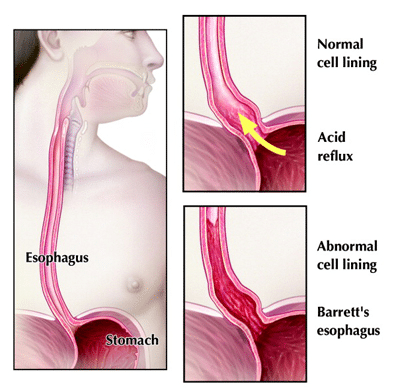
Barrett's esophagus is associated with an increased risk of developing esophageal cancer. Although the risk of developing esophageal cancer is small, it's important to have regular checkups with careful imaging and extensive biopsies of the esophagus to check for precancerous cells (dysplasia). If precancerous cells are discovered, they can be treated to prevent esophageal cancer.
Bile duct stones/ stricture
Bile duct strictures are segments of the narrowing of the intrahepatic or extrahepatic biliary ductal system. The narrowing impedes the normal antegrade flow of bile, causing proximal dilatation resulting in significant morbidity from the clinical and pathological sequelae of biliary obstruction.
.jpg)
Celiac disease
Celiac disease, sometimes called celiac sprue or gluten-sensitive enteropathy, is an immune reaction to eating gluten, a protein found in wheat, barley and rye
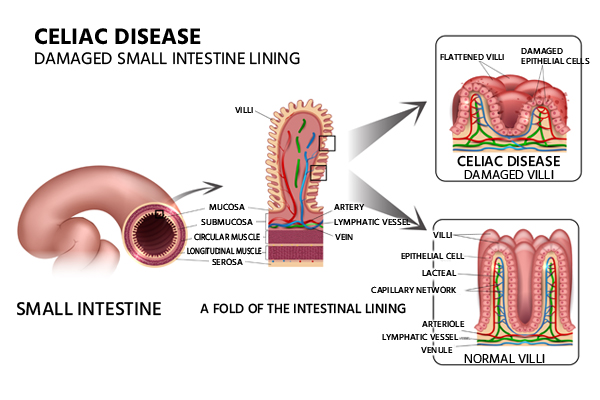
If you have celiac disease, eating gluten triggers an immune response in your small intestine. Over time, this reaction damages your small intestine's lining and prevents it from absorbing some nutrients (malabsorption). The intestinal damage often causes diarrhea, fatigue, weight loss, bloating and anemia, and can lead to serious complications.
Crohn's disease
Crohn's disease is a type of inflammatory bowel disease (IBD). It causes swelling of the tissues (inflammation) in your digestive tract, which can lead to abdominal pain, severe diarrhea, fatigue, weight loss and malnutrition.
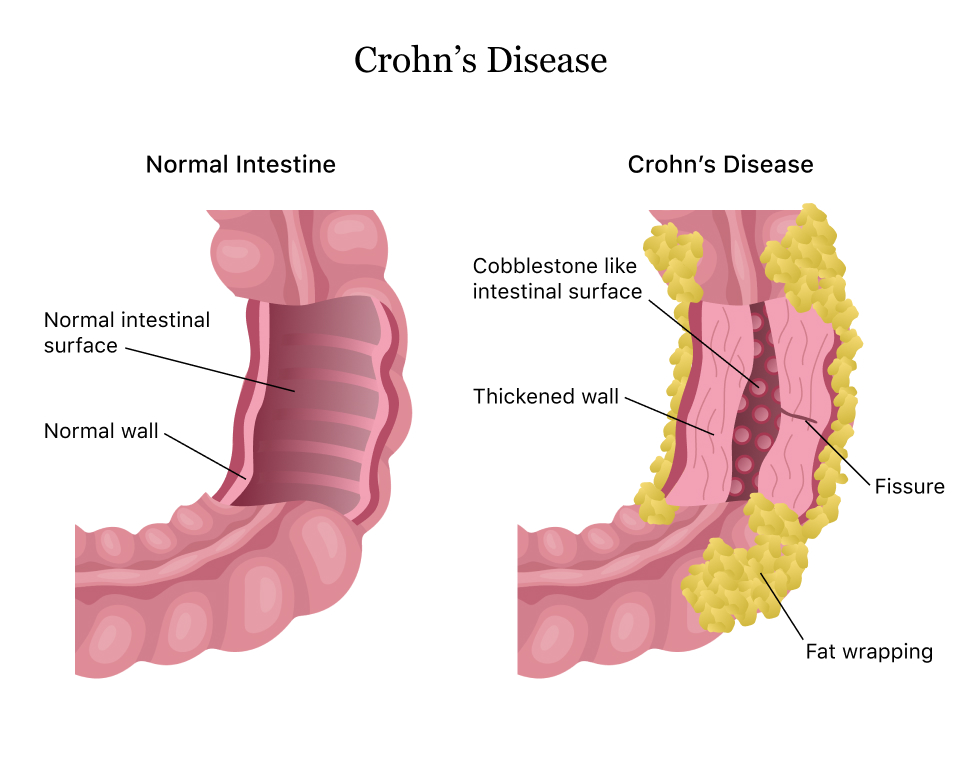
Inflammation caused by Crohn's disease can involve different areas of the digestive tract in different people, most commonly the small intestine. This inflammation often spreads into the deeper layers of the bowel.
Colon polyps
A colon polyp is a small clump of cells that forms on the lining of the colon. Most colon polyps are harmless. But over time, some colon polyps can develop into colon cancer. Colon cancer can be fatal when found in its later stages.
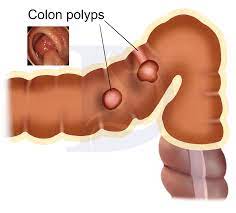
Anyone can develop colon polyps. You're at higher risk if you are 50 or older, are overweight or are a smoker. You're also at higher risk if you have a personal or family history of colon polyps or colon cancer.
Colon polyps don't usually cause symptoms. It's important to have regular screening tests because colon polyps found in the early stages can usually be removed safely and completely. The best prevention for colon cancer is regular screening for and removal of polyps.
Cancer of small intestine
Small bowel cancer is an uncommon type of cancer that occurs in the small intestine. Your small intestine, which is also called the small bowel, is a long tube that carries digested food between your stomach and your large intestine (colon).

The small intestine is responsible for digesting and absorbing nutrients from the foods you eat. It produces hormones that help with digestion. The small intestine also plays a role in your body's germ-fighting immune system, as it contains cells that fight bacteria and viruses that enter your body through your mouth.
COLON
The longest part of the large intestine (a tube-like organ connected to the small intestine at one end and the anus at the other). The colon removes water and some nutrients and electrolytes from partially digested food. The remaining material, solid waste called stool, moves through the colon, is stored in the rectum, and leaves the body through the anus. The colon is part of the digestive system.
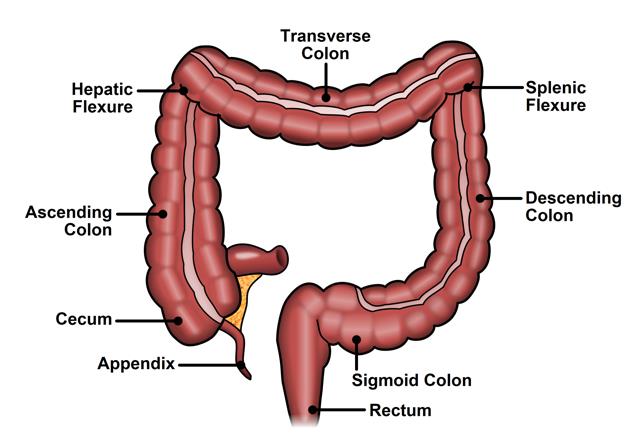
A persistent change in your bowel habits, including diarrhea or constipation or a change in the consistency of your stool.
ESOPHAGUS
The esophagus is the hollow, muscular tube that passes food and liquid from your throat to your stomach. It functions as part of your digestive system.
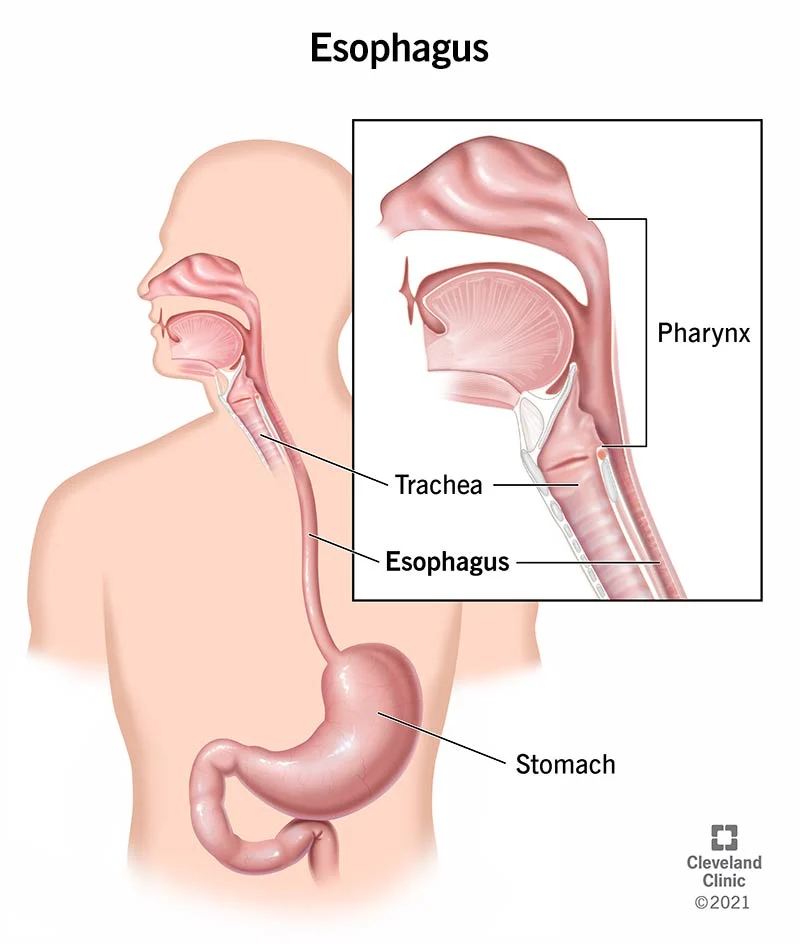
The primary function of your esophagus is to carry food and liquid from your mouth to your stomach. When you swallow, food and liquid first move from your mouth to your throat (pharynx). A small muscular flap called the epiglottis closes to prevent food and liquid from going down the “wrong pipe” — your windpipe (trachea). Another small flap called the uvula helps prevent liquid from passing upward into your nasal cavity.
GALL BLADDER LIVER
Your gallbladder is a small, pear-shaped organ that stores and releases bile. Bile is the fluid your liver produces that helps digest fats in the food you eat.
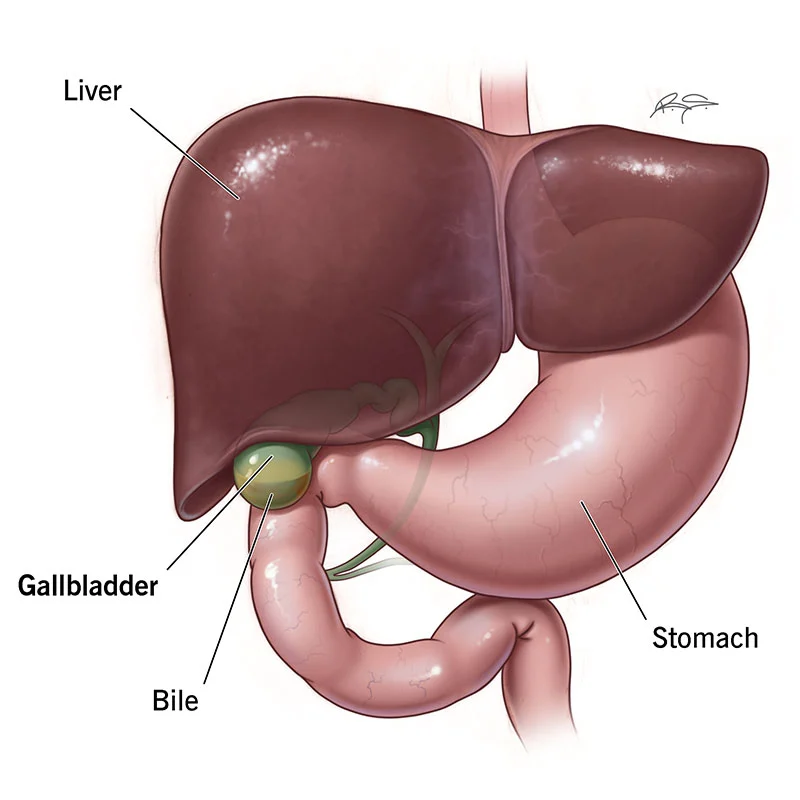
Your gallbladder is located in the upper right part of your abdomen (belly). It sits just under your liver.
PANCREAS & STOMACH
Pancreatitis is inflammation of the pancreas. The pancreas is a long, flat gland that sits tucked behind the stomach in the upper abdomen. The pancreas produces enzymes that help digestion and hormones that help regulate the way your body processes sugar (glucose).
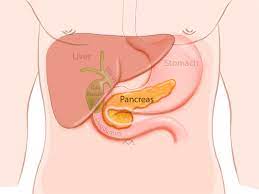
Pancreatitis can occur as acute pancreatitis — meaning it appears suddenly and lasts for days. Some people develop chronic pancreatitis, which is pancreatitis that occurs over many years
Mild cases of pancreatitis improve with treatment, but severe cases can cause life-threatening complications.
CIRRHOSIS ( END STAGE LIVER DISEASE)
Cirrhosis describes a liver that’s scarred, shrunken, or hardened. After years of damage, cirrhosis marks a point at which the liver can no longer repair itself. It gradually fails, at first leading to unpleasant complications and then death. Depending on when cirrhosis of the liver is diagnosed, recovery is often possible. As with so many other diseases, prevention and prompt diagnosis can make all the difference in the world.
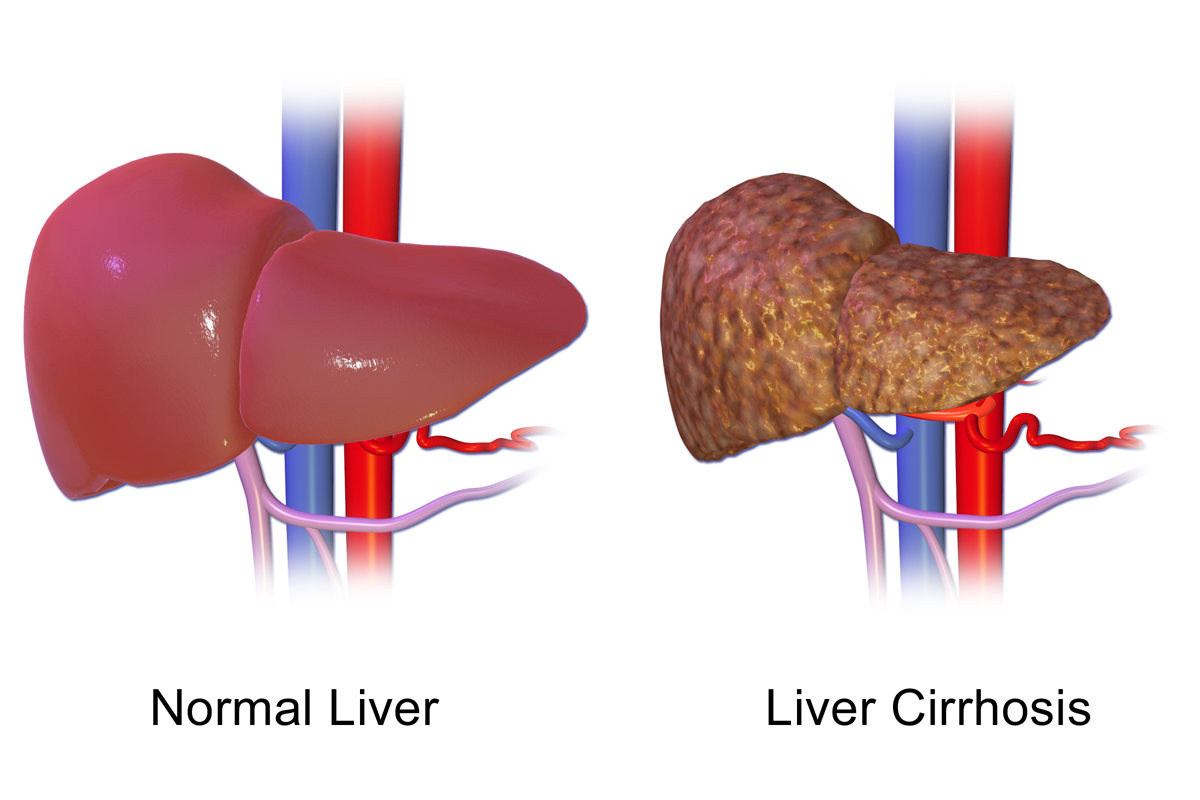
One thing to keep in mind is cirrhosis of the liver life expectancy at end stages is hard to predict. Each case is unique to the patient. Doctors can provide an estimate more specific to the health of their patients, but these are ultimately educated guesses.
Cirrhosis of the liver can be a grim diagnosis, which is why prevention and early detection are so important. Caught early, it’s possible to turn cirrhosis around and get back to living a normal life.
DIVERTICULOSIS
Diverticulosis is a clinical condition in which multiple sac-like protrusions (diverticula) develop along the gastrointestinal tract. Though diverticula may form at weak points in the walls of either the small or large intestines, the majority occur in the large intestine (most commonly the sigmoid colon).
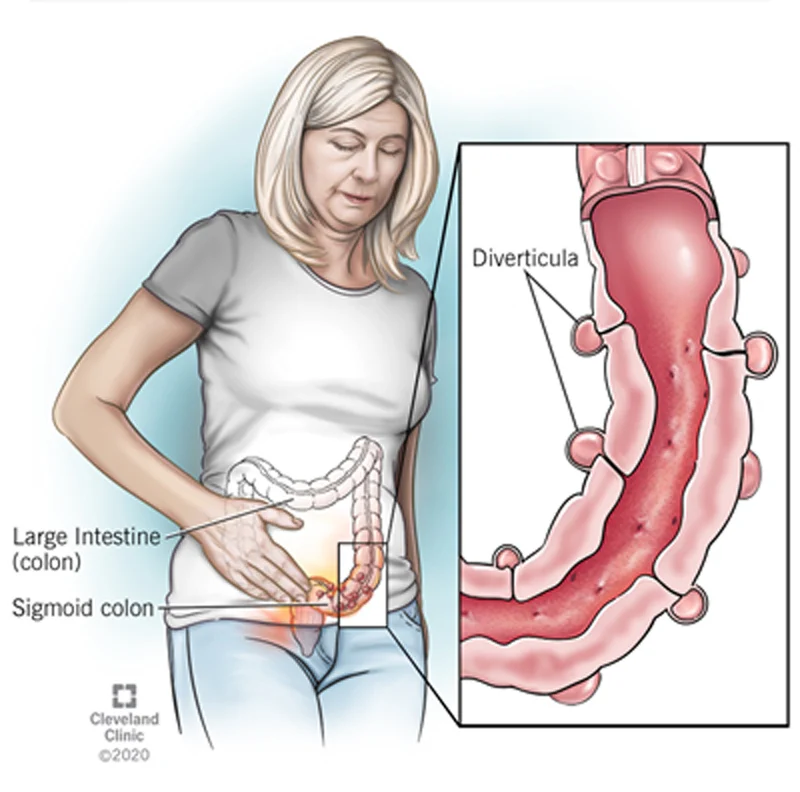
The majority of individuals with diverticulosis are asymptomatic. Diverticular disease occurs when there is symptomatic diverticulosis (e.g., diverticular bleeding); diverticulitis (e.g., acute or chronic inflammation that may or may not is complicated by abscess formation, fistula formation, bowel obstruction, or perforation); or associated segmental colitis (e.g., inflammation in segments of the mucosal segments of the colon in between diverticula). This activity reviews the causes, pathophysiology, and diagnosis of diverticulosis and highlights the interprofessional team's role in managing these patients.
DUODENAL ULCERS
A duodenal ulcer is a sore that forms in the lining of the duodenum. Your duodenum is the first part of your small intestine. This is the part of your digestive system that food travels through, after it leaves your stomach. You can get an ulcer in your stomach as well as in your duodenum.
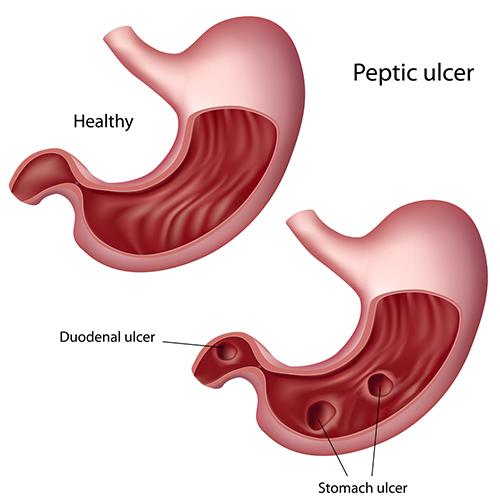
You can get an ulcer in your stomach as well as in your duodenum. Stomach ulcers and duodenal ulcers are both types of peptic ulcers. If you have either of these, you have what's called 'peptic ulcer disease'.
EROSION & DUODENITIS
Duodenitis is an intestinal condition caused by inflammation in your duodenum lining. It can sometimes happen along with gastritis, which is inflammation in your stomach lining. When they happen together, they are called gastroduodenitis.
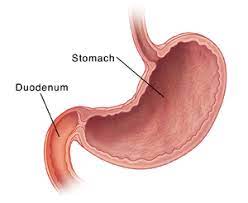
The duodenum is the upper part of your small intestine that’s located just past your stomach. This part of your digestive tract is responsible for breaking down and digesting your food.
ESOPHAGITIS
Esophagitis (uh-sof-uh-JIE-tis) is inflammation of the esophagus. The esophagus is the muscular tube that delivers food from your mouth to your stomach.
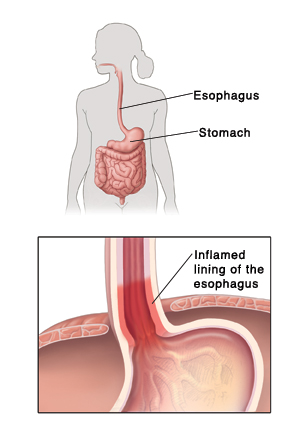
Esophagitis can cause painful, difficult swallowing and chest pain. Many different things can cause esophagitis. Some common causes include stomach acids backing up into the esophagus, infection, oral medicines and allergies.
Treatment for esophagitis depends on the underlying cause and how badly the tissue lining the esophagus is damaged. If left untreated, esophagitis can damage this lining and interfere with its function, which is to move food and liquid from your mouth to your stomach. Esophagitis also can lead to complications such as scarring or narrowing of the esophagus, unintended weight loss and dehydration.
ESOPHAGEAL STRICTURE
An esophageal stricture is an abnormal narrowing of the esophageal lumen. It often presents with difficulty swallowing and has many potential etiologies. Upper gastrointestinal endoscopy is often the first diagnostic modality offered and allows for concurrent therapeutic intervention. This activity reviews esophageal stricture evaluation and management and highlights the role of the interprofessional team in caring for patients with esophageal strictures.
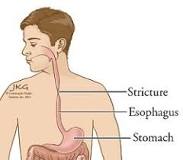
The esophagus loses distensibility with stricture formation, and this may be localized or diffuse throughout the length of the esophagus. The luminal stricture itself may have abrupt or tapered margins. Recent advancement in the use of endoscopic procedures for diagnostic as well as therapeutic purposes has increased the occurrence of iatrogenic post-procedural esophageal stricture formation resulting from the mucosal injury.
GASTROENTERITIS
Gastroenteritis is an inflammation of the lining of the stomach and intestines. The main symptoms include vomiting and diarrhea. It is usually not serious in healthy people, but it can sometimes lead to dehydration or cause severe symptoms.
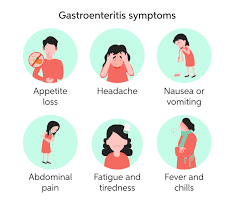
Viral gastroenteritis is the most common type. It can be caused by many different viruses, including noroviruses and rotaviruses. Some people call viral gastroenteritis the "stomach flu." But this name is not medically correct. It is not caused by flu viruses. The flu is a respiratory infection that affects your nose, throat and lungs.
GASTROINTESTINAL BLEEDING
A Gastrointestinal (GI) bleed refers to bleeding in any part of the gastrointestinal tract. The GI tract includes your esophagus, stomach, small intestine, large intestine (colon), rectum, and anus. GI bleeding is a symptom of any number of conditions and can occur in your upper or lower GI Tract.
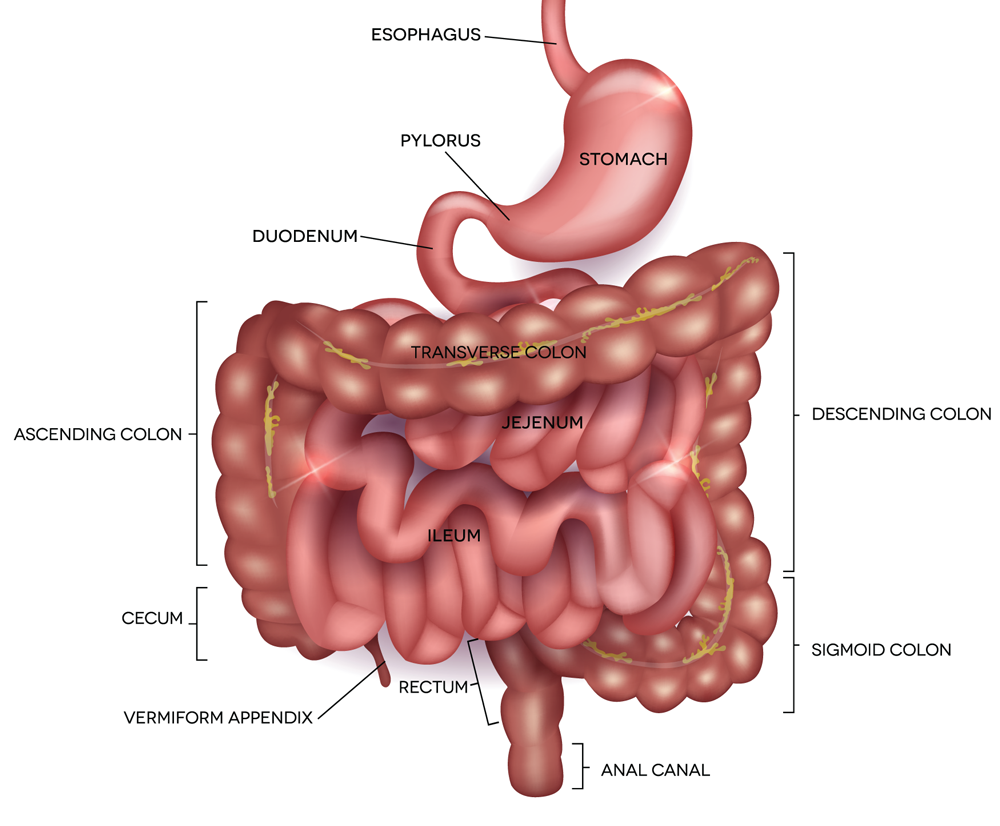
The symptoms of GI bleeding depend on the acuteness and the source of blood loss. The level of bleeding can range from mild to severe and life-threatening. Mild, chronic GI blood loss may not show any active bleeding, but can still result in an iron deficiency overtime. Many of these patients never notice any blood loss as it occurs in small amounts with the bowel movement. Blood in the stool often can be detected by hemoccult testing (testing for blood in your stool) during a routine office examination.
GALLSTONE DISEASE
Gallstone disease is the most common disorder affecting the biliary system, the body's system of transporting bile. Gallstones are solid, pebble-like masses that form in the gallbladder or the biliary tract (the ducts leading from the liver to the small intestine).
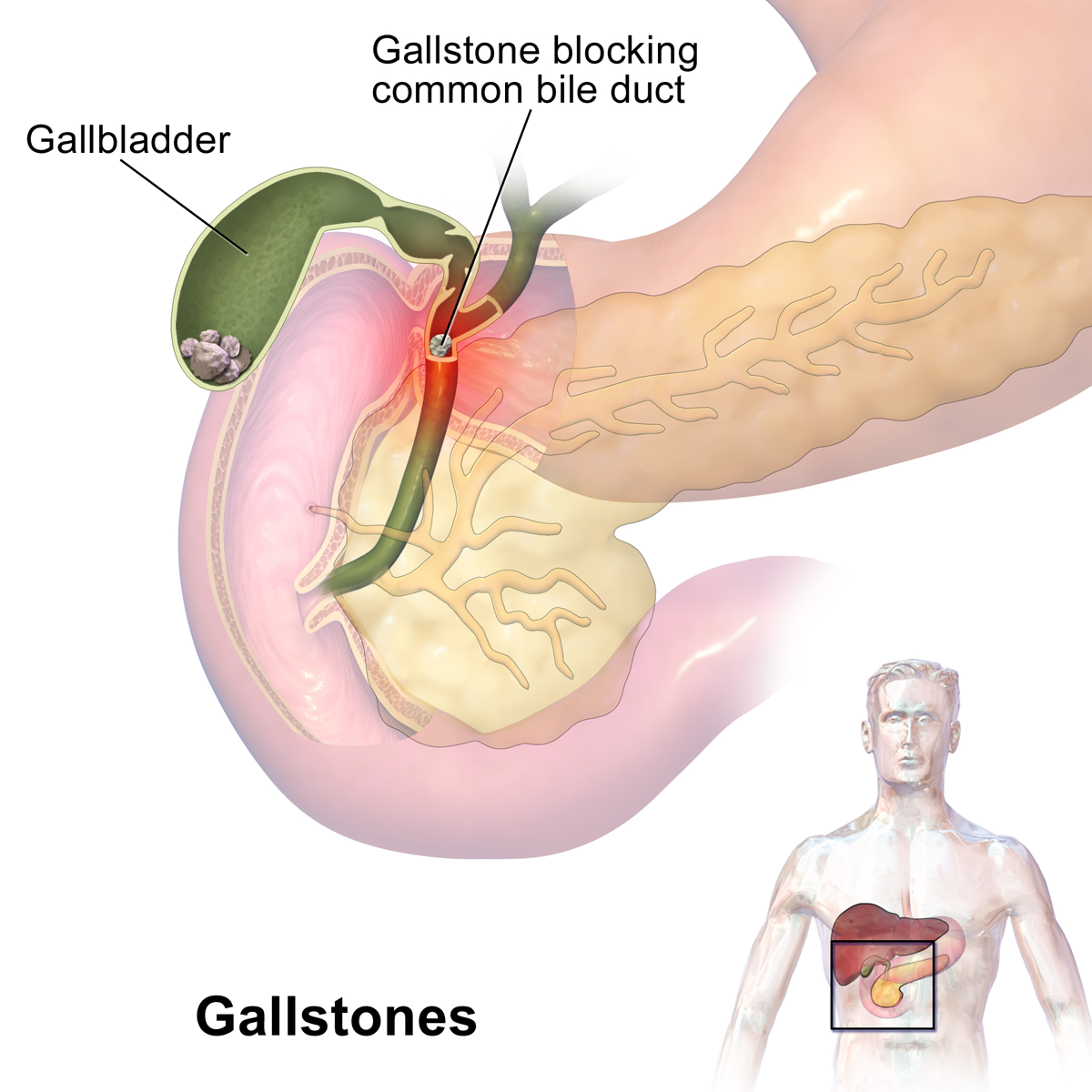
GASTRIC (STOMACH) ULCER, EROSION OR GASTRITIS
Gastritis is irritation and inflammation of the stomach lining. This means the lining is red and swollen. It can cause shallow sores in the stomach lining called erosions. An ulcer is a deeper open sore in the lining of the stomach. It may also occur in the first part of the small intestine (duodenum). The causes and symptoms of gastritis and ulcers are very similar.
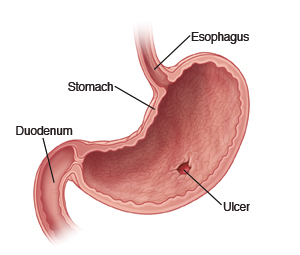
Causes and risk factors for both problems can include: Long-term use of nonsteroidal anti-inflammatory drugs (NSAIDs) such as aspirin and ibuprofen H. pylori bacteria infection Tobacco use Alcohol use Certain other conditions such as immune disorders, certain medicines such as high-dose iron supplements, and street drugs such as cocaine
GASTROPARESIS
Gastroparesis is a disease in which your stomach can't empty itself of food in a normal fashion. Symptoms include heartburn, nausea, vomiting, and feeling full quickly when eating. Treatments include medications and possibly surgery.

Gastroparesis, which means partial paralysis of the stomach, is a disease in which your stomach cannot empty itself of food in a normal way. If you have this condition, damaged nerves and muscles don’t function with their normal strength and coordination — slowing the movement of contents through your digestive system.
GASTROESOPHAGEAL REFLUX DISEASE (GERD)
Gastroesophageal reflux disease (GERD) is a long-term condition in which acid from the stomach comes up into the esophagus.
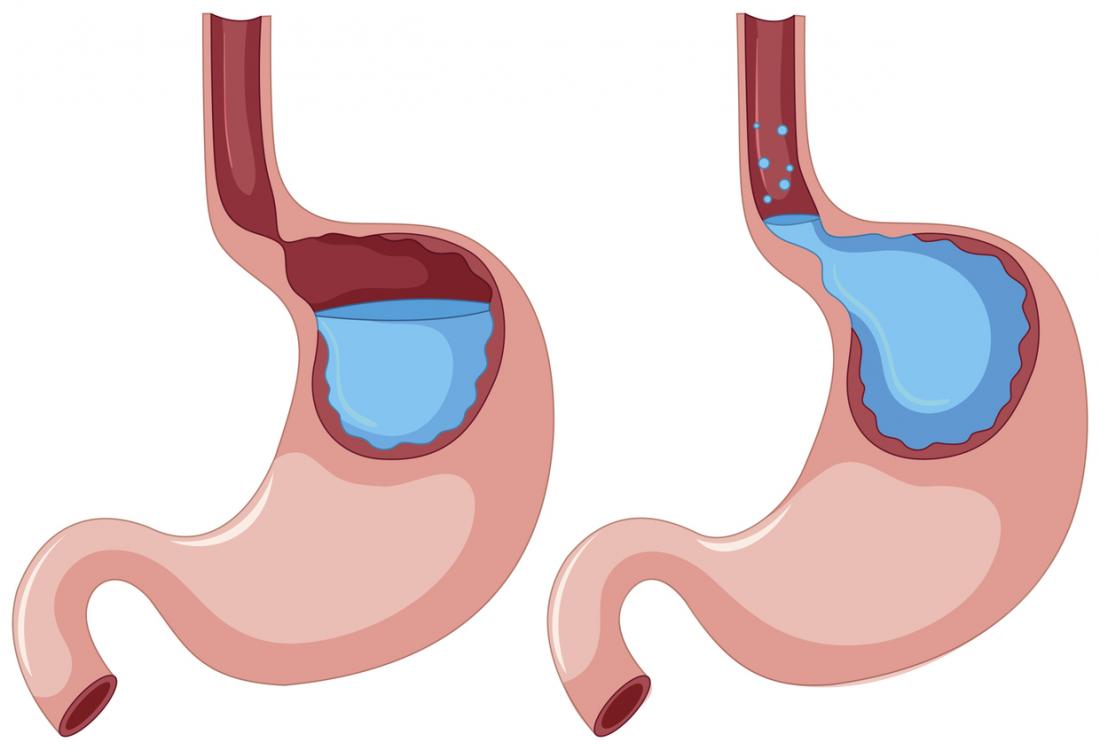
The esophagus is a tube that transports food from the mouth to the stomach. Acids in the esophagus cause heartburn and other symptoms, as well as possible tissue damage.
HELICOBACTER PYLORI
Helicobacter pylori (H. pylori) infection occurs when H. pylori bacteria infect your stomach. This usually happens during childhood. A common cause of stomach ulcers (peptic ulcers), H. pylori infection may be present in more than half the people in the world.
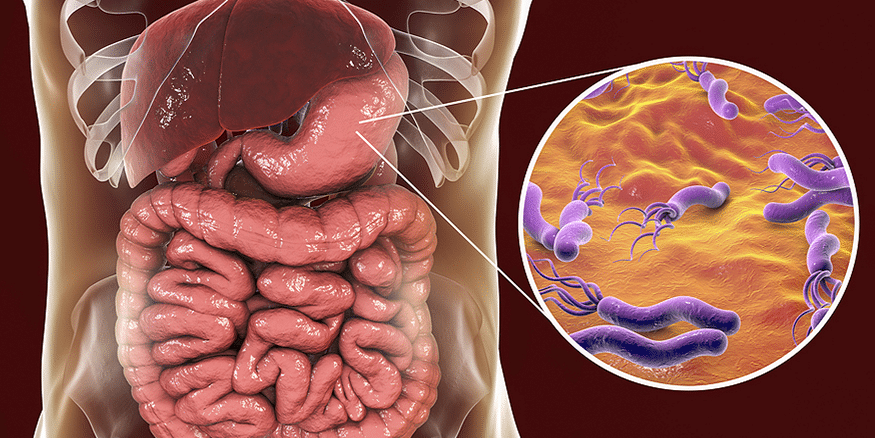
Most people don't realize they have H. pylori infection because they never get sick from it. If you develop signs and symptoms of a peptic ulcer, your health care provider will probably test you for H. pylori infection. A peptic ulcer is a sore on the lining of the stomach (gastric ulcer) or the first part of the small intestine (duodenal ulcer).
HIATAL HERNIA
Most common in people older than 50, a hiatal hernia affects up to 60% of people older than 60. It’s a condition that occurs when the upper part of your stomach pushes through the hiatus and into your chest. The hiatus is a small opening in the diaphragm muscle through which your esophagus passes on its way to the stomach.
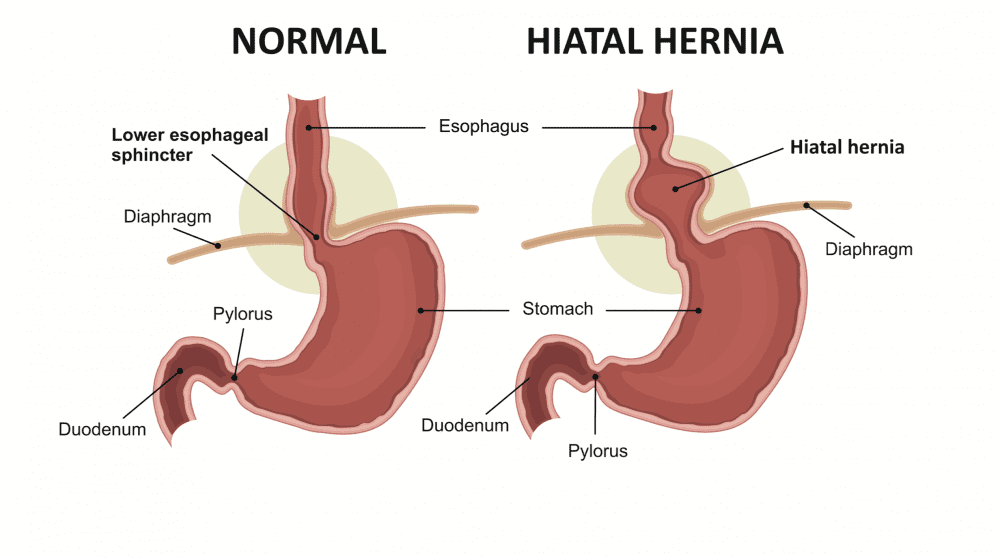
Why certain people develop hiatal hernias isn’t fully understood, but a number of things may contribute to their development, including the aging process, genetics, obesity, and smoking, as well as repeated stress from straining during bowel movements, violent coughing, or lifting heavy objects.
HEMORRHOIDS
Hemorrhoids (HEM-uh-roids), also called piles, are swollen veins in your anus and lower rectum, similar to varicose veins. Hemorrhoids can develop inside the rectum (internal hemorrhoids) or under the skin around the anus (external hemorrhoids).
.jpg)
Nearly three out of four adults will have hemorrhoids from time to time. Hemorrhoids have a number of causes, but often the cause is unknown.
HEPATITIS(A,B,C,E)
Hepatitis is an inflammation of the liver. The condition can be self-limiting or can progress to fibrosis (scarring), cirrhosis or liver cancer. Hepatitis viruses are the most common cause of hepatitis in the world but other infections, toxic substances (e.g. alcohol, certain drugs), and autoimmune diseases can also cause hepatitis.
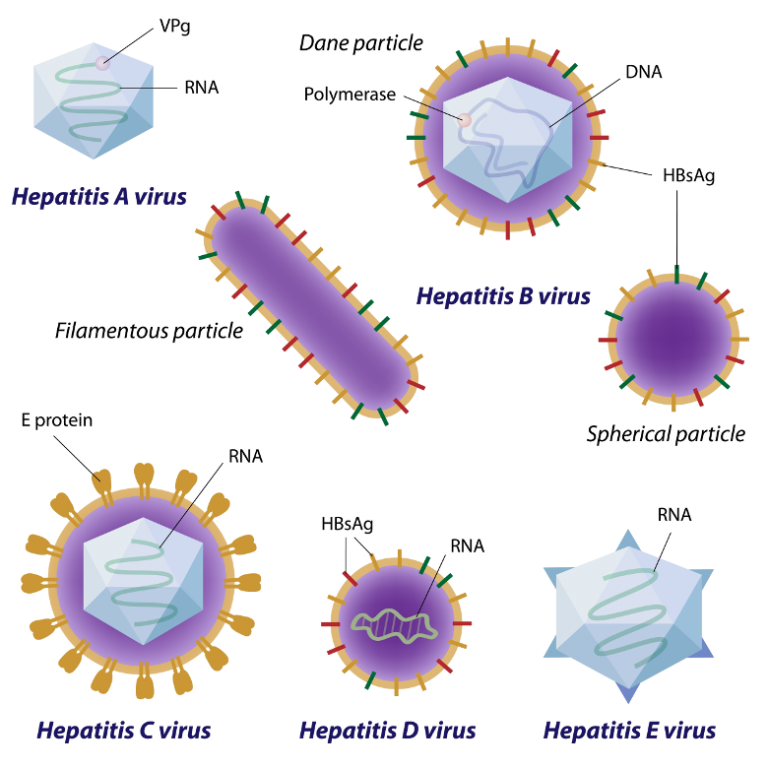
There are 5 main hepatitis viruses, referred to as types A, B, C, D and E. These 5 types are of greatest concern because of the burden of illness and death they cause and the potential for outbreaks and epidemic spread. In particular, types B and C lead to chronic disease in hundreds of millions of people and, together, are the most common cause of liver cirrhosis and cancer.
Scientists have identified 5 unique hepatitis viruses, identified by the letters A, B, C, D, and E. While all cause liver disease, they vary in important ways. Hepatitis A virus (HAV) is present in the faeces of infected persons and is most often transmitted through consumption of contaminated water or food.
Alcoholic hepatitis
Alcoholic hepatitis is inflammation of the liver caused by drinking alcohol.
Alcoholic hepatitis is most likely to occur in people who drink heavily over many years. However, the relationship between drinking and alcoholic hepatitis is complex. Not all heavy drinkers develop alcoholic hepatitis, and the disease can occur in people who drink only moderately.
If you're diagnosed with alcoholic hepatitis, you must stop drinking alcohol. People who continue to drink alcohol face a high risk of serious liver damage and death.
HEPATITIS AUTOIMMUNE
Autoimmune hepatitis is liver inflammation that occurs when your body's immune system turns against liver cells. The exact cause of autoimmune hepatitis is unclear, but genetic and enviromental factors appear to interact over time in triggering the disease.
Untreated autoimmune hepatitis can lead to scarring of the liver (cirrhosis) and eventually to liver failure. When diagnosed and treated early, however, autoimmune hepatitis often can be controlled with drugs that suppress the immune system.
HEPATITIS DRUG INDUCED
Drug-induced hepatitis is a redness and swelling (inflammation) of the liver that is caused by a harmful (toxic) amount of certain medicines. The liver helps to break down certain medicines in your blood. If there is too much medicine in your blood for your liver to break down, your liver can become badly damaged.
HEMOCHROMATOSIS (IRON OVERLOAD)
Hemochromatosis (he-moe-kroe-muh-TOE-sis) causes your body to absorb too much iron from the food you eat. Excess iron is stored in your organs, especially your liver, heart and pancreas. Too much iron can lead to life-threatening conditions, such as liver disease, heart problems and diabetes.
INTESTINAL MALABSORPTION
Malabsorption refers to impaired nutrient absorption at any point where nutrients are absorbed, and maldigestion refers to impaired nutrient digestion within the intestinal lumen or at the brush border. Although malabsorption and maldigestion differ, digestion and absorption are interdependent.
LIVER DISEASES
The liver is essential for digesting food and ridding your body of toxic substances.Liver disease can be inherited (genetic). Liver problems can also be caused by a variety of factors that damage the liver, such as viruses, alcohol use and obesity.
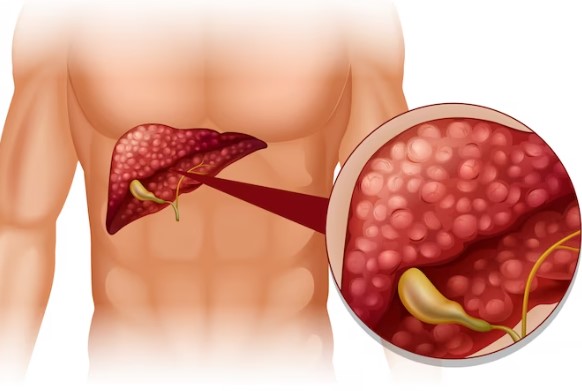
Liver disease doesn't always cause noticeable signs and symptoms. If signs and symptoms of liver disease do occur, they may include: Skin and eyes that appear yellowish (jaundice), Abdominal pain and swelling, Swelling in the legs and ankles, Itchy skin, Dark urine color, Pale stool color, Chronic fatigue.
